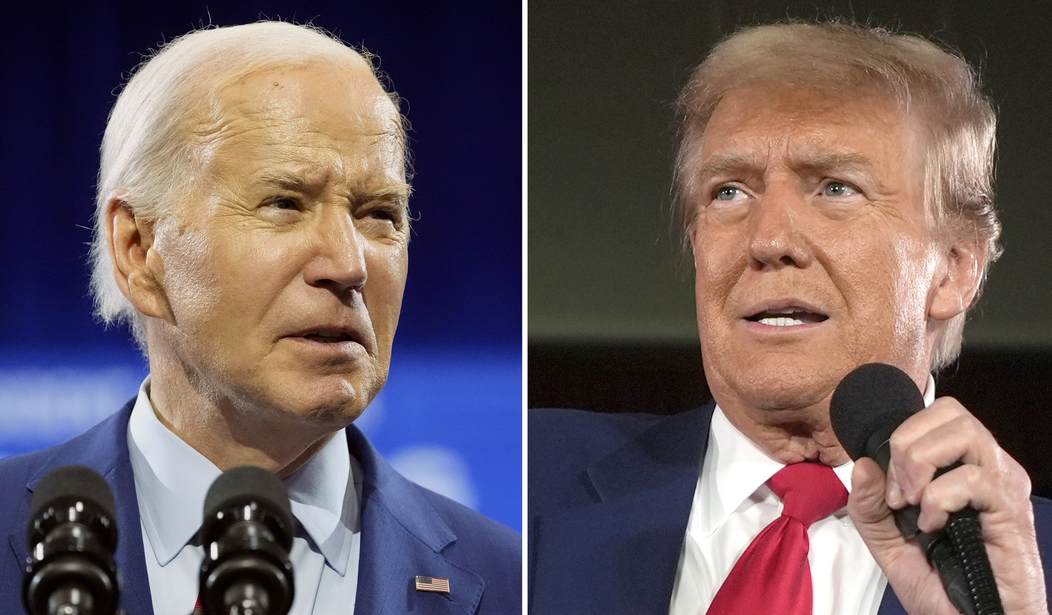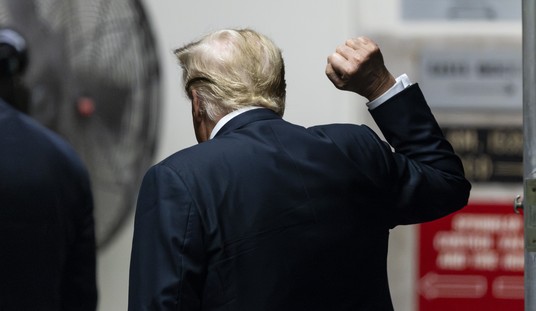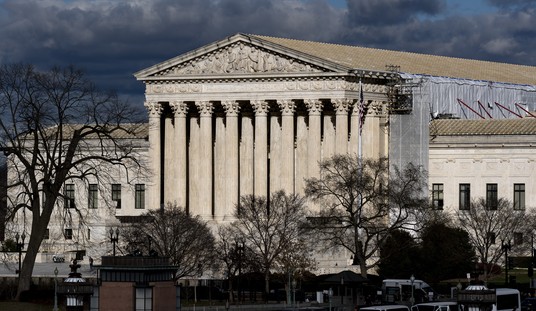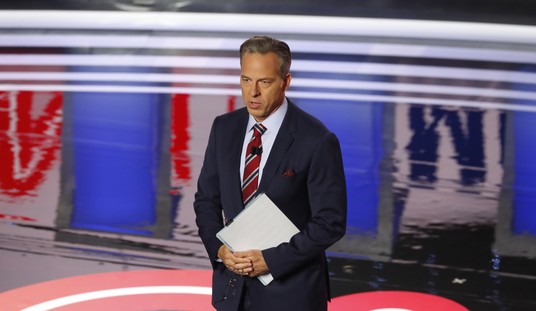Poll aggregator 538 has made quite a bit of news this week. They released a new election forecast model on Tuesday morning, which they were more than happy to promote all over social media. The forecast shows a close and competitive race, something we've come to get used to. What's even more noteworthy, though, is that results from 538 earlier in the week don't exactly suggest it would be such a close and competitive race.
On Monday, Bonchie at our sister site of RedState highlighted how Biden's popularity fell to 37.4 percent, an all-time low for him during his president and of any president at this point seeking reelection. On Tuesday night, that number wasn't much better, climbing to 37.7. percent, while 56.4 percent have an unfavorable view.
538's own Nathaniel Rakich posted the distinction.
Joe Biden's approval rating has hit 37.4% in 538's average—an all-time low. https://t.co/sF8buXFup9 pic.twitter.com/lZcLTxOOw2
— Nathaniel Rakich (@baseballot) June 10, 2024
On Tuesday, former and potentially future President Donald Trump's popularity was meanwhile at 41.5 percent, while 53.9 percent have an unfavorable view.
That brings us to Tuesday, with Rakich also among those posting about the forecast, which he explained a team had been working on for three months. As Rakich also explained, the model utilized polls and fundamentals.
Recommended
I want to shout out everyone who worked on this for the past 3 months. This was truly a team effort, with beautiful designs from our interactive team, meticulous fact-checking from our copy team, and a huge data collection effort by our research team. https://t.co/jo3N13xW1r pic.twitter.com/Qju92VRVPS
— Nathaniel Rakich (@baseballot) June 11, 2024
That's not *quite* it. The old model versions were:
— Nathaniel Rakich (@baseballot) June 11, 2024
Lite (polls only)
Classic (polls+fundamentals)
Deluxe (polls+fundamentals+expert ratings)
This model is a polls+fundamentals model, so most analogous to the old Classic.
Well, despite Biden's all-time low approval levels, not only is the race considered a "Toss-Up," but Biden is actually slightly ahead of Trump.
On Tuesday, Biden was shown with a 53-in-100 chance of winning, while Trump was at 47-in-100 chance. The forecast's release did say to check back daily, and as of Wednesday morning, Biden's gone down to a 52-in-100, while Trump has gone up to a 48-in-100 chance.
Here's some explainer points:
...The model builds on our general election polling averages by asking not just what our best guess is about who is leading the presidential race today, but what range of outcomes are possible for the actual election in November...
At launch, our forecast shows President Joe Biden locked in a practically tied race with former President Donald Trump, both in the Electoral College and national popular vote. Specifically, our model reckons Biden has a 53-in-100 chance of winning the election, meaning he wins in slightly more than half of our model's simulations of how the election could unfold. However, Trump still has a 47-in-100 chance, so this election could still very much go either way. The range of realistic* Electoral College outcomes generated by our forecasting model stretches from 132 to 445 electoral votes for Biden — a testament to how much things could change by November (and how off the polls could be).
...
To forecast the election, we rely primarily on polls asking voters whom they support. However, our forecast also incorporates various economic and political indicators that aren’t related to polling but can be used to make rough predictions for the election. For example, we have calculated an index of economic growth and optimism on every day since 1944, gathered historical approval ratings for every president since Franklin D. Roosevelt and derived a formula for predicting state election outcomes using these and other local factors. We also tested whether incumbent presidents do better when they run for reelection (they do) and whether all of these factors are less predictive of voters’ choices when political polarization is high (they are).
When it comes to other "indicators," it's worth reminding that Americans don't exactly feel very optimistic about the economy or the general direction the country is moving in. And, while incumbents may tend to do better when they run for reelection, there's been warnings for months that Biden could lose his 2020 coalition, which could thus result in him losing the election. Then again, political polarization is indeed high presently, so such factors can be expected to be "less predictive."
It's been looking like the election will come down to a few key battleground states, and the 538 forecast has Trump with a higher probability of winning in some but not all of them. While Biden only has a 40 percent chance of winning North Carolina, a 43 percent chance in Georgia, a 45 percent chance in Nevada, and a 48 percent chance in Arizona, his chances go up to 57 percent when it comes to winning Pennsylvania and Wisconsin, 59 percent in Michigan, and 72 percent in Minnesota.
While the polling average is at R+1 in Pennsylvania and Wisconsin, the median vote share for those states is D+1. And, while the polling average is even in Michigan, the median vote share is D+2.
"Right now, Trump leads Biden in most polls of the swing states that will decide the election, but the 'fundamentals' favor Biden. The combined polls-plus-fundamentals forecast splits the difference between these two viewpoints and arrives at an essentially deadlocked race," the forecast explained.
Michigan is an interesting one, where Biden has been desperately trying to appeal to the far-left base there of anti-Israel voters who have expressed outrage for what support the president dared to show Israel following the October 7 attack perpetrated against our ally in the Middle East by Hamas. Sure enough, the Biden administration has shifted in an increasingly anti-Israel direction.
The release explains that there's plenty of takeaways, including caveats. Biden's low approval rating is not mentioned, but as one takeaway that's particularly worth noting reads:
Changes in public opinion take time. We have done our best to make a model that reacts the appropriate amount to new polling data. "Appropriate" here means that the model will be conservative early on or when polls are bouncing generally around the same level, but also that it will be aggressive when polls appear to be moving uniformly across states — especially late in the campaign. However, as a properly Bayesian statistical model, the program that runs our forecast generates some amount of uncertainty about the parameters, resulting in unavoidable random error across our simulations. This means polling averages can change by a few decimal places day to day — and probabilities may jitter by around a point, which cascades down into uncertainty in our model. Don't sweat these small changes; instead, pay attention to bigger changes in the model over longer stretches of time.
ABC News' "Good Morning America" also discussed the release, where the polls showing a "dead heat," and the forecast showing "a coin flip," as well as how the race could change based on certain factors. It is because of those battleground states that the race indeed looks close.
"Even small shifts by voters can have some big, big impacts," Rick Klein pointed out during the segment, such as if youth turnout by 10 drops or if third-party candidates gain more support, which is seen as "a very real possibility." There's also the risk, again, of losing that 2020 coalition. "Another scenario," Klein raised, "if you see a shift in black and Latino voters, 10 points more to Trump, again something the Biden team is worried about," Trump would win by 297 electoral votes to Biden's 241.
While it's not clear the direction, third-party candidates to look to have a potential "to play spoiler," Klein pointed out.
538 FORECAST: Who is favored to win the 2024 presidential election? Pres. Biden and former Pres. Trump are currently in a very close race, according to @FiveThirtyEight.
— Good Morning America (@GMA) June 11, 2024
See the complete election forecast here: https://t.co/5xEo1hdx5M pic.twitter.com/gHDmUQQkiQ
Although he's no longer with 538, Nate Silver had a take worth highlighting in strong contrast to what the forecast would reveal, as Matt Margolis at our sister site of PJ Media took note of, as did Fox News' "Gutfeld!" on Tuesday night.
Reacting to that all-time low approval rating, Silver argued the Democrats should dump Biden, and that they should have a long time ago.
What's clearer IMO is that Democrats would have been better served if Biden had decided a year ago not to seek a second term, which would have allowed them to have some semblance of a primary process and give voters a say among the many popular Democrats across the country.
— Nate Silver (@NateSilver538) June 10, 2024
He also posted other noteworthy takes about Biden as well throughout Monday, including and especially as it pertains to concerns about Biden's age.
If I'd told you 10 years ago a president would seek re-election at 81 despite a supermajority of Americans having concerns about his age, and then we'd hit 8% inflation for 2 years, you wouldn't be surprised he was an underdog for reelection. You'd be surprised it was even close!
— Nate Silver (@NateSilver538) June 10, 2024
Basically I think we ought to have a strong default toward taking voters at their word, especially as opposed to making inferences from other counties when US politics are often pretty exceptional.
— Nate Silver (@NateSilver538) June 11, 2024
The side-by-side video comparisons of Biden now vs e.g. 2012 are also extremely revealing. There's been an obvious change. I think it's borderline gaslighting to imply it's just a media/vibes thing. It's common sense backed by abundant public opinion data.
— Nate Silver (@NateSilver538) June 11, 2024
























